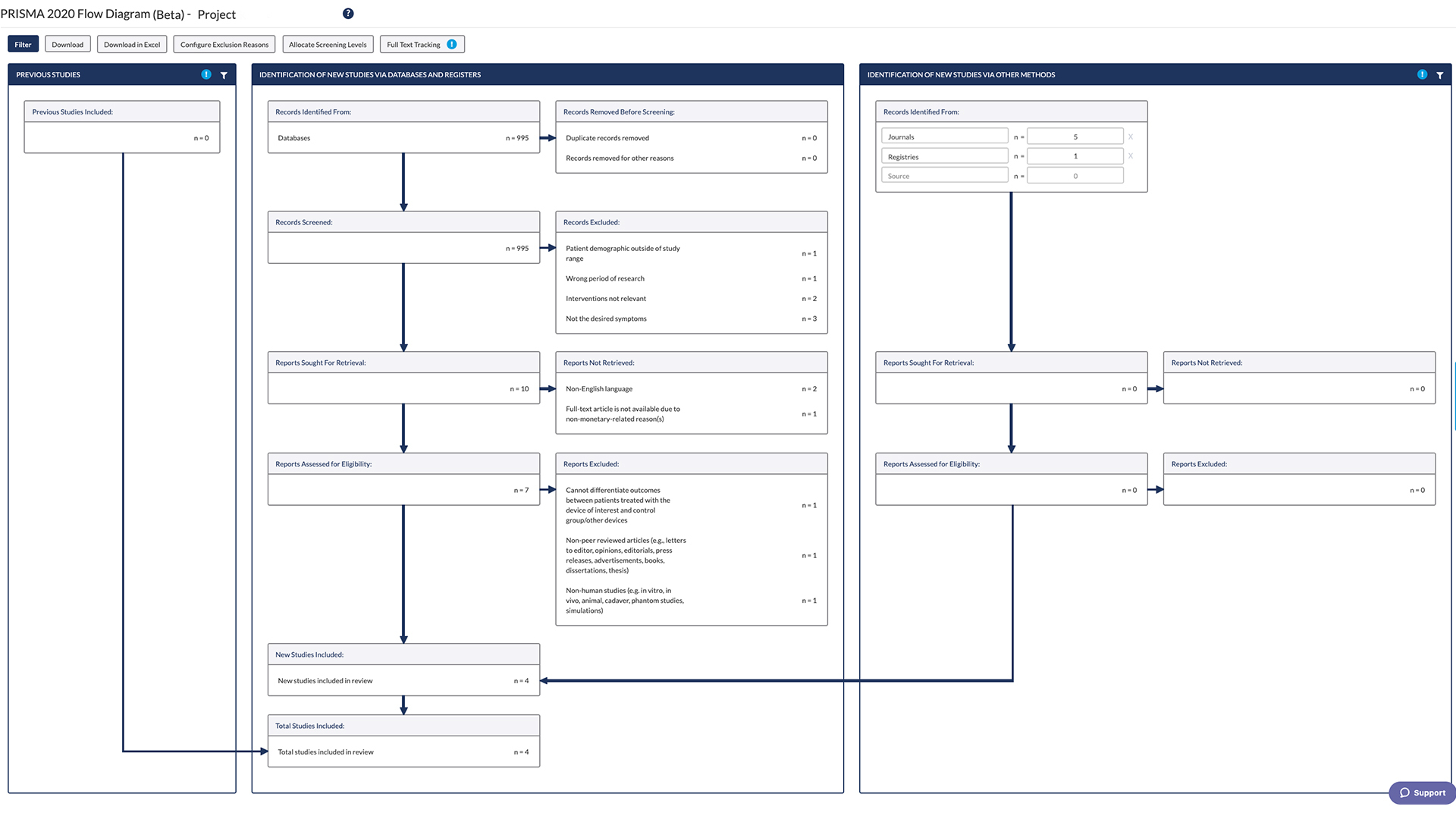PRISMA Research Tool


Automate every stage of your literature review to produce evidence-based research faster and more accurately.
PRISMA, short for Preferred Reporting Items for Systematic reviews and Meta-Analyses, is a guideline to assist researchers to improve the transparency of reporting systematic review and meta-analysis results. PRISMA was created to address the lack of transparent, well-documented review methodologies reported in published review papers.
After decades of work, PRISMA was first published in 2009. Advances in systematic review methodology and terminology necessitated an update to the guideline, leading to the publication of the PRISMA 2020 statement.
In 2021, the PRISMA literature search extension (PRISMA-S) was published. PRISMA-S provided additional guidance to improve the quality of literature searches, which are the foundations of systematic reviews. The PRISMA research tool refers to the main PRISMA 2020 publication.
Components of the PRISMA Research Tool
The PRISMA 2020 research tool is published as a suite of three papers – a PRISMA statement paper, a development paper, and an explanation and elaboration paper.
What Is the PRISMA Statement?
The PRISMA statement refers to the 27-item checklist and a 4-phase flow diagram used in the transparent reporting of systematic reviews. The checklist addresses the introduction, methods, results, and discussion sections of a systematic review report. It also includes an explanation, meaning, and rationale for each item on the checklist.
The PRISMA statement was originally designed to aid in conducting systematic reviews of studies that evaluate the effects of health interventions, irrespective of the design of the included studies. However, many of the items on the checklist are also applicable to systematic reviews in other fields, such as social or educational interventions. The PRISMA 2020 statement includes new reporting guidance that reflects advances in methods to identify, select, appraise, and synthesize studies across fields.
The PRISMA 2020 flow diagram is a visual representation of the flow of information through the specific phases of a systematic review. Completed diagrams map out the number of records identified, included, and excluded, and the reasons for exclusions. PRISMA flow diagrams are a huge boon to researchers and the research process, and are easy to learn.
Different templates are available depending on the type of review being conducted (new or updated) and the sources used to identify studies. There are also several extensions of the PRISMA statement that have been developed to facilitate the reporting of different types or aspects of systematic reviews.
PRISMA Development Paper
The PRISMA development paper outlines the steps taken to update the PRISMA 2009 statement, and provides a rationale for modifications to the original items; this paper also details key changes made in the PRISMA 2020 statement. Studying PRISMA 2009 versus 2020 offers interesting insights into the changing world of scientific research and reviews.
PRISMA 2020 Explanation and Elaboration Paper
The last paper in the PRISMA research toolkit is a new addition to the 2020 statement. This explanation and elaboration paper explains why reporting each item is recommended, and presents bullet points that detail the reporting recommendations. It also gives a detailed explanation and example for each item on the checklist. Authors unfamiliar with the PRISMA research tool are encouraged to use this document to aid in filling out the checklist.
Learn More About DistillerSR
(Article continues below)
Why Use the PRISMA Research Tool?
The primary goal of the PRISMA statement is to improve the transparency and scientific merit of systematic reviews and meta-analyses. More than 170 journals in the health sciences endorse the use of the PRISMA statement in studies considered for publication.









